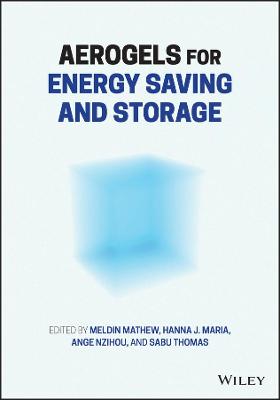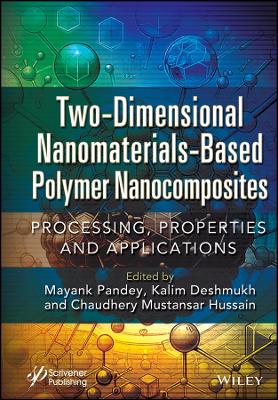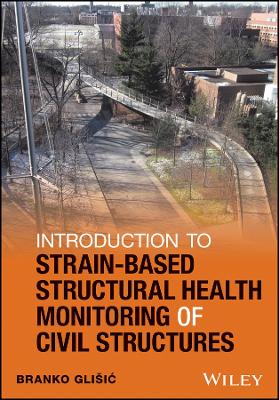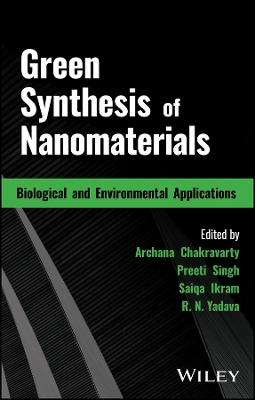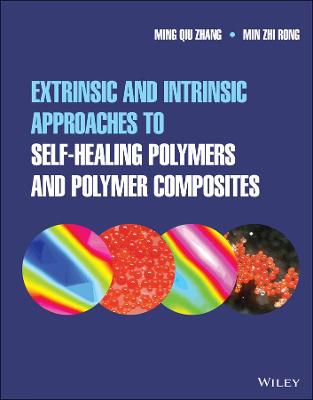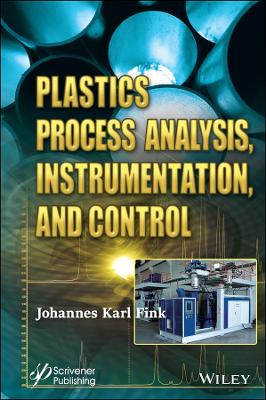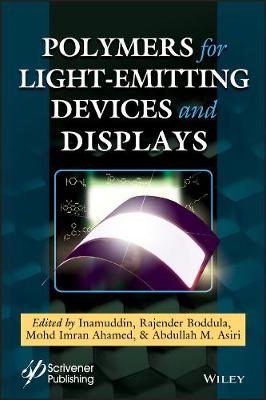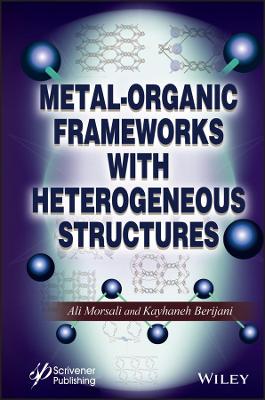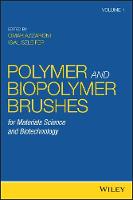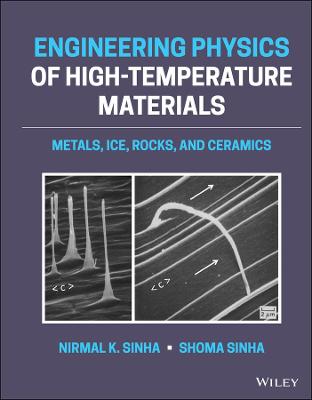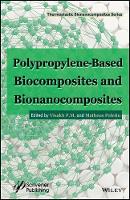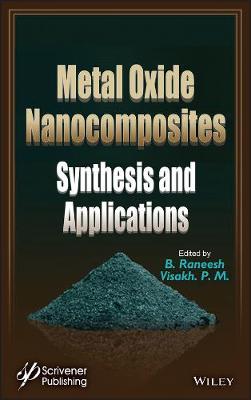Polymer Blends and Composites
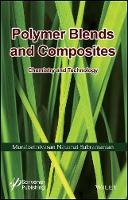 -15%
portes grátis
-15%
portes grátis
Polymer Blends and Composites
Chemistry and Technology
Subramanian, Muralisrinivasan Natamai
John Wiley & Sons Inc
05/2017
352
Dura
Inglês
9781118118894
15 a 20 dias
592
1 Introduction 1
1.1 Polymer Blends 2
1.2 Polymer Composites 2
1.3 Blends and Composites - Advantages 3
1.4 Summary 4
References 4
2 Polymers 7
2.1 Macromolecules 7
2.2 Types of Polymers 8
2.2.1 Thermoplastic Polymers 9
2.2.2 Thermoset Polymers 10
2.3 Polymerization 10
2.4 Polymerization Techniques 10
2.5 Synthetic Polymers 14
2.5.1 Thermoplastics 15
2.5.2 Polyolefins 16
2.5.3 Polyethylene (PE) 16
2.5.3.1 Physical Properties 17
2.5.3.2 Chemical Properties 18
2.5.3.3 Low-Density Polyethylene (LDPE) 19
2.5.3.4 Linear Low-Density
Polyethylene (LLDPE) 20
2.5.3.5 High-Density Polyethylene (HDPE) 21
2.5.3.6 Ultra-High Molecular Weight Polyethylene (UHMWPE) 22
2.5.4 Polypropylene (PP) 22
2.5.5 Polyvinylchloride (PVC) 23
2.5.5.1 Rigid PVC 24
2.5.6 Polystyrene (PS) 24
2.5.7 Polyethylene Terephthalate (PET) 25
2.6 Engineering Polymers 26
2.6.1 Acrylonitrile-Butadiene-Styrene (ABS) 27
2.6.2 Polyamide (PA) 28
2.6.3 Polycarbonate (PC) 29
2.6.4 Poly(methylmethacrylate) (PMMA) 30
2.6.5 Poly(ether ether ketone) (PEEK) 32
2.6.6 Poly(butylene terephthalate) (PBT) 33
2.7 Natural Polymers 33
2.7.1 Cellulose 34
2.7.2 Wood 34
2.7.3 Starch 35
2.7.4 Lignin 35
2.7.5 Chitosan 36
2.7.6 Poly(lactic acid) (PLA) 36
2.7.7 Poly(L-lactic acid) (PLLA) 37
2.8 Biodegradable Polymers 37
2.8.1 Poly(lactic acid) (PLA) 38
2.8.2 Polycaprolactone (PCL) 39
2.8.3 Poly(lactide-co-glycolide) (PLGA) 39
2.8.4 Thermosets 39
2.8.5 Phenolic Resins 40
2.8.6 Epoxy Resins 41
2.8.7 Polyurethanes 42
2.8.8 Silicone Resins 43
2.8.9 Amino Resins 43
2.8.10 Melamine Resins 43
2.8.11 Unsaturated Polyester Resins 43
2.8.12 Bismaleimide (BMI) 44
2.9 Trends 44
2.10 Summary 45
References 45
3 Polymer Properties 57
3.1 Chemistry 58
3.2 Polymer Properties 58
3.2.1 Glass Transition Temperature (Tg) 60
3.2.2 Crystallinity 61
3.2.3 Tacticity 63
3.2.4 Intermolecular Forces 63
3.2.4.1 Dipole Moment 64
3.2.4.2 Phase Behavior 64
3.3 Surface Properties 65
3.3.1 Viscoelastic Properties 65
3.3.2 Mechanical Properties 67
3.3.3 Tensile Properties 67
3.3.4 Electrical Properties 68
3.3.5 Thermal Properties 68
3.3.6 Magnetic Properties 68
3.3.7 Barrier Properties 69
3.3.8 Rheological Properties 69
3.3.9 Elastic Properties 69
3.3.10 Thermodynamic Properties 70
3.4 Catalysis 70
3.5 Factors Affecting Polymer Properties 71
3.6 Summary 72
References 72
4 Additives 77
4.1 Polymer Additives 77
4.2 Additives Influencing Blends and Composites 78
4.2.1 Antioxidants 78
4.2.2 Light Stabilizers 80
4.2.3 Heat Stabilizers 80
4.2.4 Plasticizers 81
4.2.5 Lubricants 83
4.2.6 Silp Additives 84
4.2.7 Antiblocking Additives 85
4.3 Processing Aids 85
4.3.1 Viscosity Modifiers 86
4.3.2 Accelerators 86
4.3.3 Mold Release Agents 87
4.3.4 Coupling Agents 87
4.3.5 Fillers 88
4.3.6 Flame Retardants 90
4.3.7 Antistatic Agents 91
4.3.8 Colorants 92
4.3.9 Antimicrobial Agents (Biocides) 92
4.3.10 Crosslinking Agents 93
4.3.11 Peroxides 94
4.3.12 Foaming Agents 95
4.3.13 Coupling/Dispersing Agents 96
4.3.14 Comonomers 97
4.3.15 Impact Modifiers 97
4.3.16 Natural Fibers 98
4.3.17 Copolymers as Additives 99
4.3.17.1 Compatibilizers 99
4.3.18 Interfacial Agents 100
4.3.18.1 Block Copolymers 101
4.3.18.2 Random Copolymer 103
4.3.18.3 Graft Polymers 103
4.4 Summary 104
References 104
5 Polymer Blends and Composites 113
5.1 Properties of Polymer Blends 114
5.1.1 Physicochemical Properties 115
5.1.2 Morphological Properties 116
5.1.2.1 Blend Structure 116
5.1.2.2 Phase Morphology 117
5.1.2.3 Crystallization and Morphology 119
5.1.2.4 Molecular Weight 120
5.1.2.5 Particle Size and Particle Size Distribution 121
5.1.3 Surface Properties 121
5.1.3.1 Surface Tension 121
5.1.3.2 Interfacial Modification 122
5.1.4 Rheological Properties 124
5.1.4.1 Copolymerization and Blending 125
5.1.5 Polymer Composite Properties 131
5.1.5.1 Structure 131
5.1.5.2 Crosslinking 133
5.1.5.3 Reinforcement 133
5.1.5.4 Crystalline Behavior 133
5.1.5.5 Mechanical Properties 134
5.1.5.6 Tribological Properties 134
5.1.5.7 Conductive Properties 135
5.2 Summary 135
References 136
6 Properties of Polymer Blends and Composites 145
6.1 Properties of Blends and Composites 146
6.1.1 Mechanical Properties 146
6.1.1.1 Tacticity 146
6.1.1.2 Interfacial Adhesion 147
6.1.1.3 Surface Composition and Concentration 147
6.1.2 Tensile Properties 149
6.1.3 Electrical Properties 149
6.1.4 Thermal Properties 149
6.1.5 Magnetic Properties 150
6.1.6 Viscoelastic Properties 150
6.1.7 Thermodynamic Properties 151
6.1.8 Barrier Properties 151
6.2 Summary 152
References 152
7 Polymer Blends 155
7.2.1 Interaction Parameters 157
7.2.2 Colloidal Properties 158
7.2.3 Morphology 158
7.2.4 Phase Separation 159
7.2.5 Crystallinity 159
7.2.6 Dispersion 160
7.2.7 Physicochemical Properties 160
7.3 Compatibilization 161
7.3.1 Reactive Compatibilizers 161
7.4 Classification 161
7.4.1 Miscible Blends 161
7.4.2 Immiscible Blends 162
7.4.3 Immiscible and Miscible Blends 163
7.4.4 Binary Blends 163
7.4.5 Ternary Blends 164
7.4.6 Homopolymer and Copolymer Blends 166
7.4.7 Thermoset-Thermoplastic Blends 166
7.4.8 Reactive Copolymer Blends 166
7.4.9 Commercial Blends 167
7.4.9.1 Polyolefin Blends 167
7.4.9.2 Polyethylene Blends 169
7.4.9.3 Polypropylene Blends 171
7.4.9.4 Poly(ethylene oxide) Blends 172
7.4.9.5 Polystyrene Blends 172
7.4.9.6 Polyvinylchloride Blends 173
7.4.9.7 Polyesters 175
7.4.9.8 Polyamide Blends 176
7.4.9.9 Acrylics Blends 178
7.4.10 Acrolonitrile-Butadiene-Styrene Blends 180
7.4.11 Polycarbonate Blends 181
7.4.12 Chlorinated Polyethylene Blends 182
7.4.13 Biopolymer Blends 183
7.4.13.1 Poly(lactic acid) Blends 183
7.4.14 Poly(?-caprolactone) Blends 184
7.4.15 Cyclic Polymer Blends 184
7.4.16 Polyethylene Oxide Blends 184
7.4.17 Other Polymer Blends 185
7.5 Advantage of Polymer Blends 186
7.6 Summary 186
References 187
8 Polymer Composites 199
8.1 Polymeric Phase 200
8.2 Reinforcing Phase 200
8.3 Classification 200
8.4 Characteristics 201
8.4.1 Physical Properties 202
8.5 Reinforcing Agents 203
8.5.1 Advantages 203
8.5.2 Shortcomings 203
8.6 Fillers 203
8.6.1 Surface Modification 205
8.6.2 Boron Trinitride 205
8.6.3 Carbon Black 205
8.6.4 Mineral Fillers 206
8.6.4.1 Calcium Carbonate (CaCO3) 206
8.6.4.2 Mica 207
8.7 Fibers 207
8.7.1 Fiber Length 208
8.7.2 Synthetic Fibers 208
8.7.2.1 Carbon Fiber 208
8.7.2.2 Fiberglass 209
8.7.2.3 Aromatic Polyamide Fibers 210
8.8 Composites Classification 210
8.8.1 Mechanical Properties 211
8.8.2 Thermoplastic Composites 212
8.8.3 Filler Reinforced Polymeric Composites 212
8.8.4 Conducting Polymer Composites 212
8.8.5 Fiber Reinforced Composites 213
8.8.6 Continuous Fiber Composites 213
8.8.7 Discontinuous Fiber Reinforced Polymers 214
8.8.8 Carbon Fiber Reinforced Composites 214
8.9 Thermoset Composites 215
8.9.1 Advantages 216
8.10 Thermoplastic vs Thermoset Composites 216
8.11 Summary 217
References 218
9 Biocomposites 223
9.1 Natural Fillers 223
9.1.1 Wood Flour 224
9.2 Natural Fibers 224
9.2.1 Treatments of Natural Fibers 225
9.2.1.1 Silanes 225
9.2.1.2 Benzoylation and Acrylation 226
9.2.1.3 Coupling Agents 226
9.2.1.4 Dispersing Agents 226
9.2.2 Wood Fibers 226
9.2.3 Cellulosic Fibers 227
9.2.4 Other Natural Fibers 228
9.2.5 Shortcomings 228
9.3 Thermoplastic Materials 228
9.4 Natural Polymer Composites 228
9.5 Wood-Polymer Composites 229
9.5.1 Properties 230
9.5.2 Advantages 230
9.5.3 Disadvantages 231
9.5.4 Applications 231
9.6 Biocomposites 231
9.6.1 Glucose-Based Biocomposites 231
9.6.2 Polylactide Composites 232
9.7 Future Trends 232
9.8 Summary 233
References 233
10 Processing Technology 237
10.1 Processing Technology 237
10.2 Processing Requirements 238
10.3 Processing Polymer Blends 239
10.3.1 Devolatilization 239
10.3.2 Mixing 239
10.4 Selection of Polymers 240
10.4.1 Immiscible Polymer Blends 241
10.5 Machine Selection 241
10.6 Processing Polymer Composites 242
10.6.1 Melt Mixing 242
10.7 Thermoset Polymers 243
10.8 Processing Technology for Polymer Blends and Composites 243
10.8.1 Injection Molding 243
10.8.2 Extrusion Technology 246
10.8.2.1 Single Screw Extrusion 246
10.8.2.2 Twin Screw Extrusion 248
10.8.3 Thermoforming 250
10.8.4 Reactive Blending 252
10.8.4.1 Reaction Extrusion 253
10.8.4.1 Prepolymer 254
10.8.5 Curing 254
10.8.5.1 Autoclave Curing 254
10.8.6 Lay-Up and Spray-Up Techniques 255
10.8.7 Pultrusion 255
10.8.8 Sheet Molding Compound 256
10.8.9 Compression Molding 258
10.8.9.1 Shortcomings 260
10.8.10 Resin Transfer Molding 260
10.9 Wood-Polymer Composites 261
10.9.1 Injection Molding 262
10.9.2 Extrusion 262
10.9.3 Microcellular Foam Process 264
10.10 Recycling 266
10.11 Summary 267
References 268
11 Blends, Composites and the Environment 275
11.1 Recycling of Polymer Wastes 276
11.2 Polymer Blends and Composites Recycling 277
11.2.1 Pyrolysis 277
11.2.2 Energy Conversion 278
11.2.3 Recycling of Polymer Composites 278
11.2.4 Grinding 278
11.2.5 Reinforcing Agent Separation 280
11.3 Shortcomings 280
11.4 Present Needs 281
11.5 Future Commitment 282
References 282
12 Future Trends 285
12.1 Blends and Composites 286
12.2 Blend and Composite Requirements 286
12.3 Future Benefits 287
12.3.1 Automobile Applications 287
12.3.2 Aerospace Applications 287
12.3.3 High Strength Particle 287
12.3.4 Tribological Performance 287
12.4 Greener Processing 288
12.4.1 Use of Recycled Polymer 288
12.4.2 Present Trends 289
12.5 Future Trends 290
12.6 Summary 290
References 291
1 Introduction 1
1.1 Polymer Blends 2
1.2 Polymer Composites 2
1.3 Blends and Composites - Advantages 3
1.4 Summary 4
References 4
2 Polymers 7
2.1 Macromolecules 7
2.2 Types of Polymers 8
2.2.1 Thermoplastic Polymers 9
2.2.2 Thermoset Polymers 10
2.3 Polymerization 10
2.4 Polymerization Techniques 10
2.5 Synthetic Polymers 14
2.5.1 Thermoplastics 15
2.5.2 Polyolefins 16
2.5.3 Polyethylene (PE) 16
2.5.3.1 Physical Properties 17
2.5.3.2 Chemical Properties 18
2.5.3.3 Low-Density Polyethylene (LDPE) 19
2.5.3.4 Linear Low-Density
Polyethylene (LLDPE) 20
2.5.3.5 High-Density Polyethylene (HDPE) 21
2.5.3.6 Ultra-High Molecular Weight Polyethylene (UHMWPE) 22
2.5.4 Polypropylene (PP) 22
2.5.5 Polyvinylchloride (PVC) 23
2.5.5.1 Rigid PVC 24
2.5.6 Polystyrene (PS) 24
2.5.7 Polyethylene Terephthalate (PET) 25
2.6 Engineering Polymers 26
2.6.1 Acrylonitrile-Butadiene-Styrene (ABS) 27
2.6.2 Polyamide (PA) 28
2.6.3 Polycarbonate (PC) 29
2.6.4 Poly(methylmethacrylate) (PMMA) 30
2.6.5 Poly(ether ether ketone) (PEEK) 32
2.6.6 Poly(butylene terephthalate) (PBT) 33
2.7 Natural Polymers 33
2.7.1 Cellulose 34
2.7.2 Wood 34
2.7.3 Starch 35
2.7.4 Lignin 35
2.7.5 Chitosan 36
2.7.6 Poly(lactic acid) (PLA) 36
2.7.7 Poly(L-lactic acid) (PLLA) 37
2.8 Biodegradable Polymers 37
2.8.1 Poly(lactic acid) (PLA) 38
2.8.2 Polycaprolactone (PCL) 39
2.8.3 Poly(lactide-co-glycolide) (PLGA) 39
2.8.4 Thermosets 39
2.8.5 Phenolic Resins 40
2.8.6 Epoxy Resins 41
2.8.7 Polyurethanes 42
2.8.8 Silicone Resins 43
2.8.9 Amino Resins 43
2.8.10 Melamine Resins 43
2.8.11 Unsaturated Polyester Resins 43
2.8.12 Bismaleimide (BMI) 44
2.9 Trends 44
2.10 Summary 45
References 45
3 Polymer Properties 57
3.1 Chemistry 58
3.2 Polymer Properties 58
3.2.1 Glass Transition Temperature (Tg) 60
3.2.2 Crystallinity 61
3.2.3 Tacticity 63
3.2.4 Intermolecular Forces 63
3.2.4.1 Dipole Moment 64
3.2.4.2 Phase Behavior 64
3.3 Surface Properties 65
3.3.1 Viscoelastic Properties 65
3.3.2 Mechanical Properties 67
3.3.3 Tensile Properties 67
3.3.4 Electrical Properties 68
3.3.5 Thermal Properties 68
3.3.6 Magnetic Properties 68
3.3.7 Barrier Properties 69
3.3.8 Rheological Properties 69
3.3.9 Elastic Properties 69
3.3.10 Thermodynamic Properties 70
3.4 Catalysis 70
3.5 Factors Affecting Polymer Properties 71
3.6 Summary 72
References 72
4 Additives 77
4.1 Polymer Additives 77
4.2 Additives Influencing Blends and Composites 78
4.2.1 Antioxidants 78
4.2.2 Light Stabilizers 80
4.2.3 Heat Stabilizers 80
4.2.4 Plasticizers 81
4.2.5 Lubricants 83
4.2.6 Silp Additives 84
4.2.7 Antiblocking Additives 85
4.3 Processing Aids 85
4.3.1 Viscosity Modifiers 86
4.3.2 Accelerators 86
4.3.3 Mold Release Agents 87
4.3.4 Coupling Agents 87
4.3.5 Fillers 88
4.3.6 Flame Retardants 90
4.3.7 Antistatic Agents 91
4.3.8 Colorants 92
4.3.9 Antimicrobial Agents (Biocides) 92
4.3.10 Crosslinking Agents 93
4.3.11 Peroxides 94
4.3.12 Foaming Agents 95
4.3.13 Coupling/Dispersing Agents 96
4.3.14 Comonomers 97
4.3.15 Impact Modifiers 97
4.3.16 Natural Fibers 98
4.3.17 Copolymers as Additives 99
4.3.17.1 Compatibilizers 99
4.3.18 Interfacial Agents 100
4.3.18.1 Block Copolymers 101
4.3.18.2 Random Copolymer 103
4.3.18.3 Graft Polymers 103
4.4 Summary 104
References 104
5 Polymer Blends and Composites 113
5.1 Properties of Polymer Blends 114
5.1.1 Physicochemical Properties 115
5.1.2 Morphological Properties 116
5.1.2.1 Blend Structure 116
5.1.2.2 Phase Morphology 117
5.1.2.3 Crystallization and Morphology 119
5.1.2.4 Molecular Weight 120
5.1.2.5 Particle Size and Particle Size Distribution 121
5.1.3 Surface Properties 121
5.1.3.1 Surface Tension 121
5.1.3.2 Interfacial Modification 122
5.1.4 Rheological Properties 124
5.1.4.1 Copolymerization and Blending 125
5.1.5 Polymer Composite Properties 131
5.1.5.1 Structure 131
5.1.5.2 Crosslinking 133
5.1.5.3 Reinforcement 133
5.1.5.4 Crystalline Behavior 133
5.1.5.5 Mechanical Properties 134
5.1.5.6 Tribological Properties 134
5.1.5.7 Conductive Properties 135
5.2 Summary 135
References 136
6 Properties of Polymer Blends and Composites 145
6.1 Properties of Blends and Composites 146
6.1.1 Mechanical Properties 146
6.1.1.1 Tacticity 146
6.1.1.2 Interfacial Adhesion 147
6.1.1.3 Surface Composition and Concentration 147
6.1.2 Tensile Properties 149
6.1.3 Electrical Properties 149
6.1.4 Thermal Properties 149
6.1.5 Magnetic Properties 150
6.1.6 Viscoelastic Properties 150
6.1.7 Thermodynamic Properties 151
6.1.8 Barrier Properties 151
6.2 Summary 152
References 152
7 Polymer Blends 155
7.2.1 Interaction Parameters 157
7.2.2 Colloidal Properties 158
7.2.3 Morphology 158
7.2.4 Phase Separation 159
7.2.5 Crystallinity 159
7.2.6 Dispersion 160
7.2.7 Physicochemical Properties 160
7.3 Compatibilization 161
7.3.1 Reactive Compatibilizers 161
7.4 Classification 161
7.4.1 Miscible Blends 161
7.4.2 Immiscible Blends 162
7.4.3 Immiscible and Miscible Blends 163
7.4.4 Binary Blends 163
7.4.5 Ternary Blends 164
7.4.6 Homopolymer and Copolymer Blends 166
7.4.7 Thermoset-Thermoplastic Blends 166
7.4.8 Reactive Copolymer Blends 166
7.4.9 Commercial Blends 167
7.4.9.1 Polyolefin Blends 167
7.4.9.2 Polyethylene Blends 169
7.4.9.3 Polypropylene Blends 171
7.4.9.4 Poly(ethylene oxide) Blends 172
7.4.9.5 Polystyrene Blends 172
7.4.9.6 Polyvinylchloride Blends 173
7.4.9.7 Polyesters 175
7.4.9.8 Polyamide Blends 176
7.4.9.9 Acrylics Blends 178
7.4.10 Acrolonitrile-Butadiene-Styrene Blends 180
7.4.11 Polycarbonate Blends 181
7.4.12 Chlorinated Polyethylene Blends 182
7.4.13 Biopolymer Blends 183
7.4.13.1 Poly(lactic acid) Blends 183
7.4.14 Poly(?-caprolactone) Blends 184
7.4.15 Cyclic Polymer Blends 184
7.4.16 Polyethylene Oxide Blends 184
7.4.17 Other Polymer Blends 185
7.5 Advantage of Polymer Blends 186
7.6 Summary 186
References 187
8 Polymer Composites 199
8.1 Polymeric Phase 200
8.2 Reinforcing Phase 200
8.3 Classification 200
8.4 Characteristics 201
8.4.1 Physical Properties 202
8.5 Reinforcing Agents 203
8.5.1 Advantages 203
8.5.2 Shortcomings 203
8.6 Fillers 203
8.6.1 Surface Modification 205
8.6.2 Boron Trinitride 205
8.6.3 Carbon Black 205
8.6.4 Mineral Fillers 206
8.6.4.1 Calcium Carbonate (CaCO3) 206
8.6.4.2 Mica 207
8.7 Fibers 207
8.7.1 Fiber Length 208
8.7.2 Synthetic Fibers 208
8.7.2.1 Carbon Fiber 208
8.7.2.2 Fiberglass 209
8.7.2.3 Aromatic Polyamide Fibers 210
8.8 Composites Classification 210
8.8.1 Mechanical Properties 211
8.8.2 Thermoplastic Composites 212
8.8.3 Filler Reinforced Polymeric Composites 212
8.8.4 Conducting Polymer Composites 212
8.8.5 Fiber Reinforced Composites 213
8.8.6 Continuous Fiber Composites 213
8.8.7 Discontinuous Fiber Reinforced Polymers 214
8.8.8 Carbon Fiber Reinforced Composites 214
8.9 Thermoset Composites 215
8.9.1 Advantages 216
8.10 Thermoplastic vs Thermoset Composites 216
8.11 Summary 217
References 218
9 Biocomposites 223
9.1 Natural Fillers 223
9.1.1 Wood Flour 224
9.2 Natural Fibers 224
9.2.1 Treatments of Natural Fibers 225
9.2.1.1 Silanes 225
9.2.1.2 Benzoylation and Acrylation 226
9.2.1.3 Coupling Agents 226
9.2.1.4 Dispersing Agents 226
9.2.2 Wood Fibers 226
9.2.3 Cellulosic Fibers 227
9.2.4 Other Natural Fibers 228
9.2.5 Shortcomings 228
9.3 Thermoplastic Materials 228
9.4 Natural Polymer Composites 228
9.5 Wood-Polymer Composites 229
9.5.1 Properties 230
9.5.2 Advantages 230
9.5.3 Disadvantages 231
9.5.4 Applications 231
9.6 Biocomposites 231
9.6.1 Glucose-Based Biocomposites 231
9.6.2 Polylactide Composites 232
9.7 Future Trends 232
9.8 Summary 233
References 233
10 Processing Technology 237
10.1 Processing Technology 237
10.2 Processing Requirements 238
10.3 Processing Polymer Blends 239
10.3.1 Devolatilization 239
10.3.2 Mixing 239
10.4 Selection of Polymers 240
10.4.1 Immiscible Polymer Blends 241
10.5 Machine Selection 241
10.6 Processing Polymer Composites 242
10.6.1 Melt Mixing 242
10.7 Thermoset Polymers 243
10.8 Processing Technology for Polymer Blends and Composites 243
10.8.1 Injection Molding 243
10.8.2 Extrusion Technology 246
10.8.2.1 Single Screw Extrusion 246
10.8.2.2 Twin Screw Extrusion 248
10.8.3 Thermoforming 250
10.8.4 Reactive Blending 252
10.8.4.1 Reaction Extrusion 253
10.8.4.1 Prepolymer 254
10.8.5 Curing 254
10.8.5.1 Autoclave Curing 254
10.8.6 Lay-Up and Spray-Up Techniques 255
10.8.7 Pultrusion 255
10.8.8 Sheet Molding Compound 256
10.8.9 Compression Molding 258
10.8.9.1 Shortcomings 260
10.8.10 Resin Transfer Molding 260
10.9 Wood-Polymer Composites 261
10.9.1 Injection Molding 262
10.9.2 Extrusion 262
10.9.3 Microcellular Foam Process 264
10.10 Recycling 266
10.11 Summary 267
References 268
11 Blends, Composites and the Environment 275
11.1 Recycling of Polymer Wastes 276
11.2 Polymer Blends and Composites Recycling 277
11.2.1 Pyrolysis 277
11.2.2 Energy Conversion 278
11.2.3 Recycling of Polymer Composites 278
11.2.4 Grinding 278
11.2.5 Reinforcing Agent Separation 280
11.3 Shortcomings 280
11.4 Present Needs 281
11.5 Future Commitment 282
References 282
12 Future Trends 285
12.1 Blends and Composites 286
12.2 Blend and Composite Requirements 286
12.3 Future Benefits 287
12.3.1 Automobile Applications 287
12.3.2 Aerospace Applications 287
12.3.3 High Strength Particle 287
12.3.4 Tribological Performance 287
12.4 Greener Processing 288
12.4.1 Use of Recycled Polymer 288
12.4.2 Present Trends 289
12.5 Future Trends 290
12.6 Summary 290
References 291

